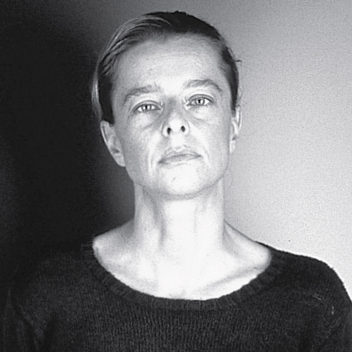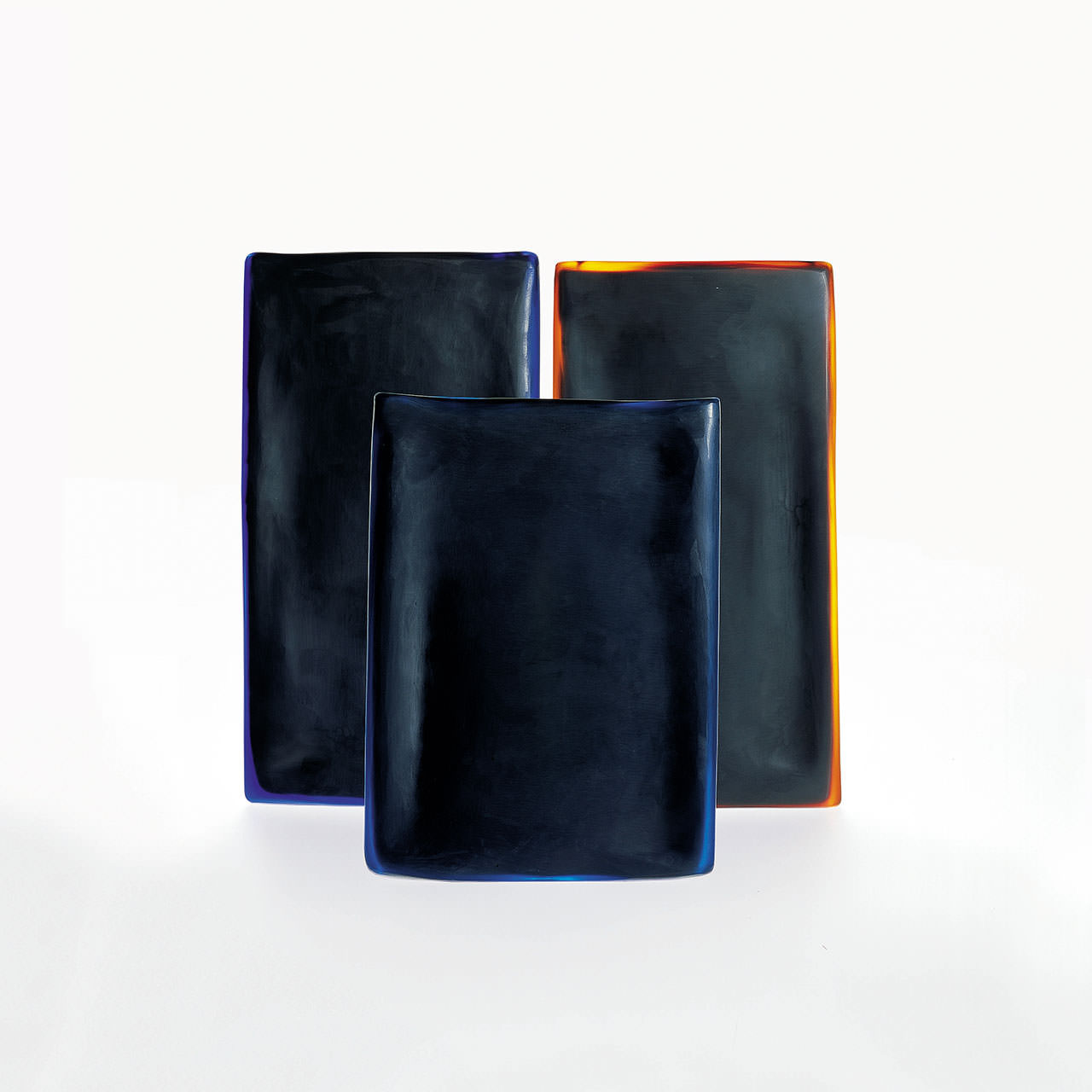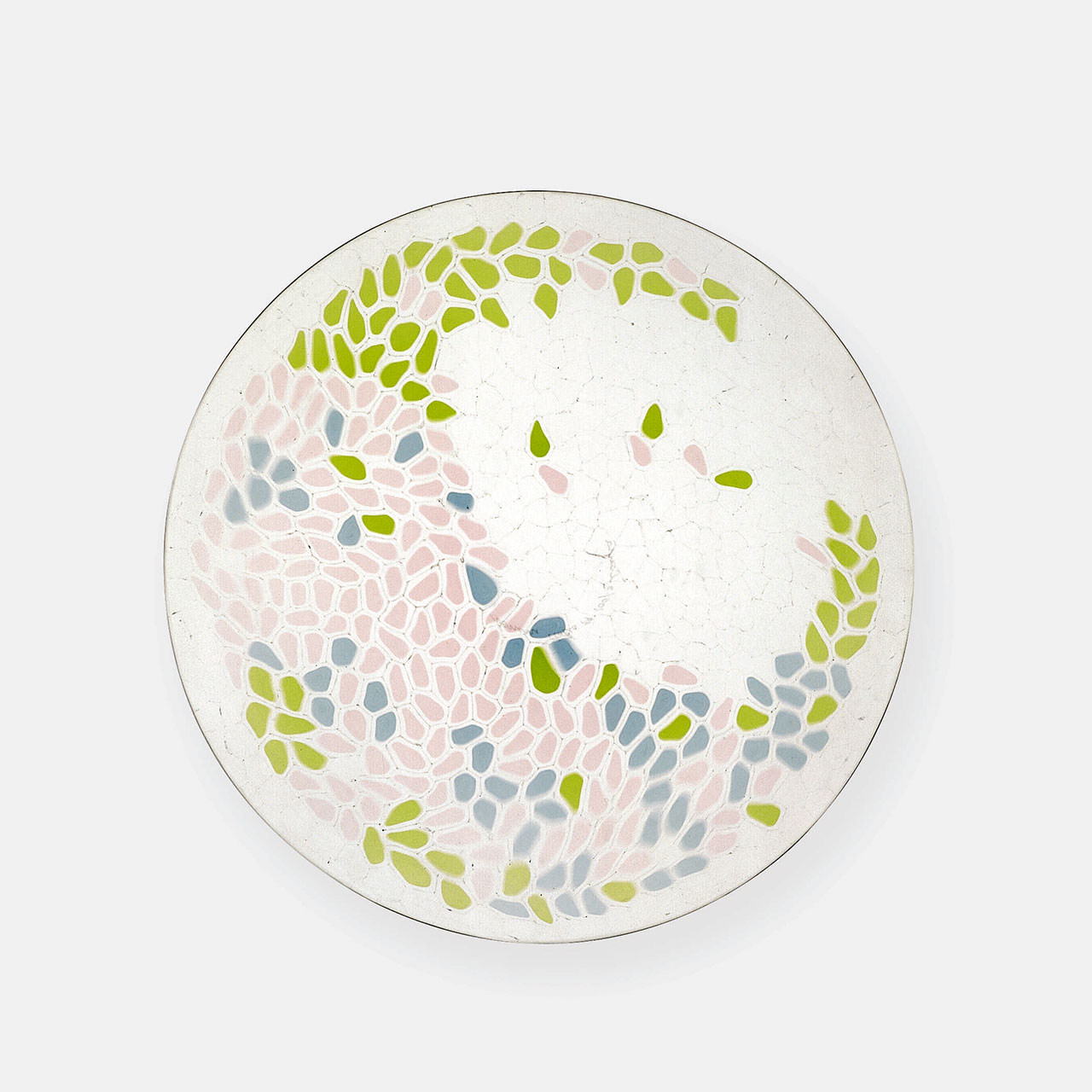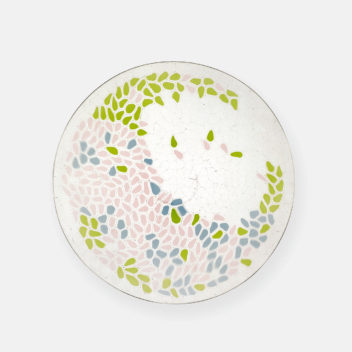
Laura Diaz de Santillana 1955–
Born in Venice, Laura Diaz de Santillana attended the School of Visual Arts in New York. After working as a graphic designer at the design firm of Vignelli Associates in 1976, she returned to Italy and began an active collaboration with Vetreria Venini & C., founded by her grandfather, Paolo Venini. At the workshop, managed with a spirit of great openness by her father, Ludovico Diaz de Santillana, her work brought her in close contact with the many Italian and foreign artists who came to the furnace in those years. During that period, she used the techniques of Murano to create refined works with unusual colors, among which the plates in vetro mosaico deserve particular mention. From 1985 to 1993, she was the designer and artistic director of Eos and later worked as designer for Rosenthal and for Ivan Baj. Further developing her own artistic identity through the creation of original works, lately she has focused her attention on the sculptural qualities of the material, which is often finished in singular textures. De Santillana’s meditated study of color has produced original solutions. She has participated in numerous exhibitions in Europe, the United States, and Japan, winning widespread consensus. Several of her works have been acquired by public and private collections such as the Corning Museum of Glass, the Museum für Kunst und Gewerbe in Hamburg, and the Museo Vetrario di Murano.




